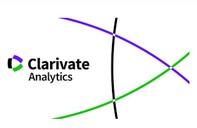La conmutación cognitiva afecta la selección de estrategia aritmética: Evidencia de patrones de mirada y medidas conductuales
Resumen
Aunque se han realizado muchos estudios sobre el cambio cognitivo, se sabe poco acerca de si el cambio cognitivo afecta el uso de las estrategias aritméticas por parte de las personas y cómo lo hace. Utilizamos las tareas de estimación y comparación numérica dentro del paradigma de reconocimiento de operandos y el paradigma de elección / no elección para explorar los efectos del cambio cognitivo en el proceso de selección de estrategia aritmética. Los resultados mostraron que el rendimiento de los individuos en la tarea de referencia fue superior al de la tarea de cambio. El modo de presentación y la conmutación cognitiva influyeron claramente en los patrones de la mirada durante la selección de estrategia, con duraciones de fijación más largas en el modo de presentación numérica que en el modo de presentación de reloj. Además, el número de fijaciones fue mayor en la tarea de conmutación que en la tarea de línea de base. Estos resultados indican que los efectos del cambio cognitivo en la selección de la estrategia aritmética están claramente limitados por la forma en que se presentan los números.
Descargas
Citas
Ansari, D. (2008). Effects of development and enculturation on number representation. Nature Reviews Neuroscience, 9(4), 278-291.
Bachtfold, D., Baumuller, M. & Brugger, P. (1998). Stimulus response compatibility in representational space. Neuropsychologia, 36(8), 731-735.
Bull. R. (2001). Executive functioning as a predictor of children’s mathematics ability: Inhibition, switching, and working memory. Developmental Neuropsychology, 19(3), 273-293.
Burny, E. (2012). Time-related competencies in primary education. Doctoral Dissertation. Ghent University: Ghent.
Burny, E., Valcke, M., & Desoete, A. (2012). Clock reading: An underestimated topic in children with mathematical difficulties. Journal of Learning Disabilities, 45(4), 361-360.
Case, R., Okamoto, Y., Henderson, B., McKeough, A., & Bleiker, C. (1996). Exploring the macrostructure of children’s central conceptual structures in the domains of number and narrative. Monographs of the Society for Research in Child Development, 61(1-2), 59-82.
Chen, L. L., Liu, M., & Cao, J. M. (2009). Review and prospects of children’s estimate strategies (In Chinese). Journal of Mathematics Education, 18(3), 83-86.
Chen, Y. H., & Wang, M. Y. (2009). Relationship between executive function and arithmetic cognitive strategies in children (In Chinese). Journal of Psychological Science, 32(1), 34-37.
Dehaene, S. (1997). The number sense: How the mind creates mathematics. New York: Oxford University Press.
Diamond, A. (2013). Executive functions. Annual Review of Psychology, 64, 135-168.
Dowker, A. (2001). Numeracy recovery: A pilot scheme for early intervention with young children with numeracy difficulties. Support for Learning, 16 (1), 6-10.
French, J. W., Ekstrom, R. B., & Price, I. A. (1963). Kit of reference tests for cognitive factors. Princeton, NJ: Educational Testing Service.
Imbo, I., & Vandierendonck, A. (2007). The development of strategy use in elementary school children: Working memory and individual differences. Journal of Experimental Child Psychology, 96 (4), 284-309.
Lemaire, P., & Lecacheur, M. (2001). Older and younger adults’ strategy use and execution in currency conversion tasks: Insights from French to Euro and Euro to French Franc conversions. Journal of Experimental Psychology: Applied, 7(3), 195-206.
Lemaire, P., & Lecacheur, M. (2002). Children’s strategies in computational estimation. Journal of Experimental Child Psychology, 82(4), 281-304.
Lemaire, P., & Reder, L. (1999). What affects strategy selection in arithmetic? An example of parity and five effects on product verification. Memory & Cognition, 27 (2), 364-382.
Mao, C. X. (2012). The effect of cognitive load on task switching (Unpublished master’s thesis). Zhejiang Normal University, Hangzhou.
Metcalfe, A. W. S., & Campbell, J. I. D. (2010). Switch costs and the operand recognition paradigm. Psychological Research, 74 (5), 491-498.
Moeller, K., Pixner S., Kaufmann L., & Nuerk H. C. (2009). Children’s early mental number line: Logarithmic or decomposed linear? Journal of Experimental Child Psychology, 103(4), 503-515.
Rittle-Johnson, B., & Siegler, R. S. (1999). Learning to spell: Variability, choice, and change in children’s strategy use. Child Development, 70(2), 332-348.
Siegler, R. S., & Shrager, J. (1984). Strategy choices in addition and subtraction: How do children know what to do? In C. Sophian (Ed.), Origins of cognitive skills (pp.229-293). Hillsdale, NJ: Erlbaum.
Siegler, R. S., & Shipley, C. (1995). Variation, selection, and cognitive change. In G. Halford & T. Simon (Eds.), Developing cognitive competence: New approaches to process modeling (pp. 31-76). Hillsdale, NJ: Erlbaum.
Thevenot, C., Barrouillet, P., & Fayol, M. (2001). Algorithmic solution of arithmetic problems and operands-answer associations in LTM. The Quarterly Journal of Experimental Psychology, 54A (2), 599-611.
Thevenot, C., Castel, C., Danjon, J., & Fayol, M. (2014). Identifying strategies in arithmetic with the operand recognition paradigm: A matter of switch cost? Journal of Experimental Psychology: Learning, Memory, and Cognition, 41(2), 541-552.
Thevenot, C., Castel, C., Fanget, M., & Fayol, M. (2010). Mental subtraction in high- and lower skilled arithmetic problem solvers: Verbal report versus operand-recognition paradigms. Journal of Experimental Psychology: Learning, Memory, and Cognition, 36(5), 1242-1255.
Thevenot, C., Fanget, M.F., & Fayol, M. (2007). Retrieval or nonretrieval strategies in mental arithmetic? An operand recognition paradigm. Memory & Cognition, 35(6), 1344-1352.
Torbeyns, J., Verschaffel, L., & Ghesquiere, P. (2005). Simple addition strategies in a first-grade class with multiple strategy instruction. Cognition and Instruction, 23(1), 1-21.
Wang, Y. X. (2011). Relationship among central executive component, cognitive style and adult arithmetic strategy use: Evidence from estimates (Unpublished master’s thesis). Shandong Normal University, Ji Nan.
Wu, Y. W., & You, X. Q. (2007). Parallel processing mechanism of mental rotation in dual task situations. Acta Psychologica Sinica, 39(5), 785-794.
Zhao, X. C., Zuo, H. F., & Ren, Y. J. (2006). Review of eye tracker and gaze tracking technology. Computer Engineering and Applications, 12(1), 118-120.
Las obras que se publican en esta revista están sujetas a los siguientes términos:
1. El Servicio de Publicaciones de la Universidad de Murcia (la editorial) conserva los derechos patrimoniales (copyright) de las obras publicadas, y favorece y permite la reutilización de las mismas bajo la licencia de uso indicada en el punto 2.
© Servicio de Publicaciones, Universidad de Murcia, 2024
2. Las obras se publican en la edición electrónica de la revista bajo una licencia Creative Commons Reconocimiento-CompartirIgual 4.0 Internacional (texto legal). Se pueden copiar, usar, difundir, transmitir y exponer públicamente, siempre que: i) se cite la autoría y la fuente original de su publicación (revista, editorial y URL de la obra); ii) no se usen para fines comerciales; iii) se mencione la existencia y especificaciones de esta licencia de uso.
3. Condiciones de auto-archivo. Se permite y se anima a los autores a difundir electrónicamente las versiones pre-print (versión antes de ser evaluada y enviada a la revista) y/o post-print (versión evaluada y aceptada para su publicación) de sus obras antes de su publicación, ya que favorece su circulación y difusión más temprana y con ello un posible aumento en su citación y alcance entre la comunidad académica. Color RoMEO: verde.













